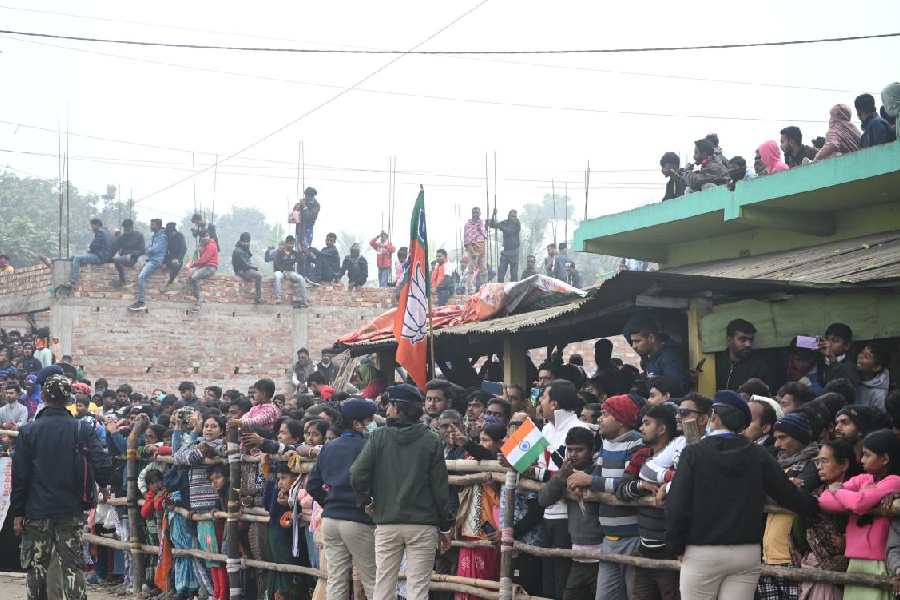 |
| Cari (beef stew) |
Some months ago, we had a visitor who came from Vietnam. The bright young journalist, my brother-in-law’s friend from Hanoi, had many interesting stories to tell us about life in a country that shaped the conscience of an entire generation in the Sixties and the Seventies. But that was not the only reason why we enjoyed her short stay with us. One evening, Thuy cooked some brilliant Vietnamese food for a crowd of hungry folks. And the verdict was unanimous: she, and the food, had passed with flying colours.
And speaking of colours, the food was as beautifully hued as it was delicious. Thuy had been warned before she arrived that she would be expected to cook for us. So she had come from home with packets of rice paper and glass noodles. She put the noodles in a huge bowl of pho — a Vietnamese soup with bean sprouts, basil, lime and chilli — and used the rice paper for spring rolls filled with boiled shrimps, basil, beans and red and yellow capsicum. She rolled the paper in such a way that the colours were all lined up on one side, making the goi cuon — fresh rolls that are neither fried nor steamed because the rice paper is itself edible — a feast for the eyes.
 |
| Banh Xeo (mushroom crepes) |
I had some of these delicious rolls at a Vietnamese restaurant called Blue Ginger at the Taj Palace Hotel in New Delhi the other day. I have always believed that Vietnamese food is one of the best cuisines in the world. And though it may not immediately edge out the current pan- Indian favourites — Chinese and Italian — I am sure that Indians will happily take to the cuisine.
That’s because Vietnamese food is incredibly light and yet full of flavours. Take the bo kho — a tenderloin stew — that I had at the restaurant. The stew, also called cari, had been flavoured with curry powder, beef jus and star anise, and the meat had been cooked till tender with baby carrots and a tomato puree.
The chef of Blue Ginger, a young man called Gaurav Tandon, was sent to Vietnam for several months to learn about cooking traditions and skills in the Southeast Asian nation. After all, there are a great many layers to Vietnamese cuisine that can only be unravelled over time.
 |
| Hue-style grilled chicken |
The many culinary influences on the cuisine underline the richness of the food. The use of the pungent fish sauce and coconut milk points to Thai and Malaysian influences. The raw mango salad that I started my meal with, for instance, had a nice Southeast Asian touch to it.
From China, they have taken the tradition of using chilli sauce, soy and noodles. The Chinese influence was strong in the two fish dishes that the chef had prepared for me — sea bass with soy sauce and steamed fish with chillies and tomatoes.
But I think what gives the food a distinctive identity is the French influence on it. The impact of the French, who ruled Vietnam from the mid-19th century to the mid-20th century, can be seen in the light crepes and stews. The word pho, too, some believe, comes from the French word feu, for fire. Baguettes often figure on the Vietnamese table, to be eaten with a stew or a cari. Crepes are again a legacy of the French. I, for one, had a delicious dish called banh xeo, which was a rice crepe with all kinds of mushrooms in it.
I find that while the Vietnamese temper their food with red chillies, as they do in the rest of the region, the use of black pepper is not uncommon. A grilled corn-fed chicken Hue style had been wonderfully flavoured with crushed peppercorn, chilli flakes and rock salt.
Vietnamese food has taken its time coming to India, but I think it’s here to stay. When we were young and full of fire, the slogan that moved us all was ‘Amar nam, tomar nam, Vietnam, Vietnam.’ These days I am quite tempted to use that favourite mantra of ours in culinary references.
Steamed basa with haricot beans ginger tomato chilli sauce (serves 1)
 |
Ingredients
• 200g basa fish fillet • 75g haricot beans • 6 cherry tomatoes • 20g chopped ginger • 60ml chilli sauce • 20g chopped red chillies • 10g chopped garlic • 20g spring onion • 10ml oil • salt to taste
Method
Clean the fish and steam for five minutes. De-string the beans and blanch them. Sauté some chopped garlic, ginger and red chillies. Add the cherry tomatoes and the chilli sauce and season it. Add the beans. Now remove the beans from the sauce and arrange them neatly on a platter. Place the steamed fish on the beans and pour the hot tomato chilli sauce over the fish. Garnish with some shredded spring onions. Pour very hot oil on the spring onions. Serve with steamed rice.
Photographs by Rupinder Sharma











